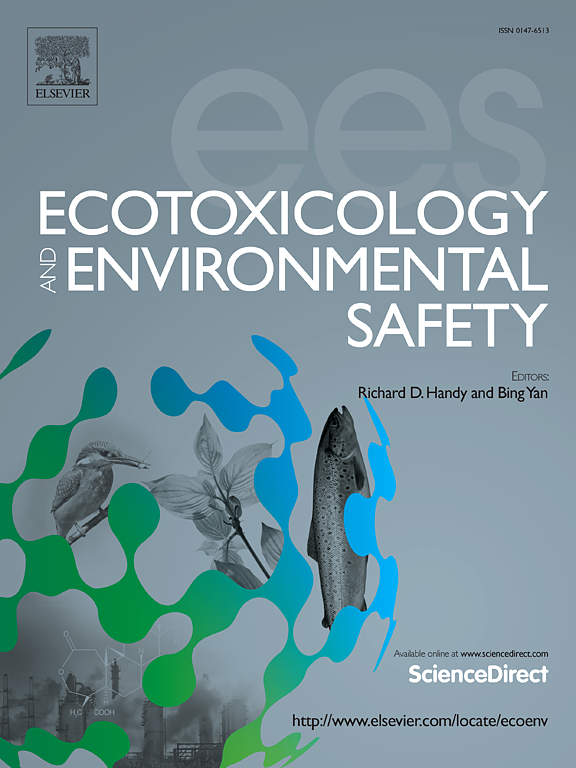Metabolomics reveals increased toxicity in earthworms (Eisenia fetida) of the transformation product methyl-triclosan
IF 6.2
2区 环境科学与生态学
Q1 ENVIRONMENTAL SCIENCES
引用次数: 0
Abstract
The effects of triclosan (TCS) and its transformation product methyl-triclosan (MTCS) on the earthworm Eisenia fetida were investigated using Gas chromatography–mass spectrometry (GC-MS) metabolomics. Earthworms were exposed to 0, 0.25, 1, 4, 16, and 64 µg g−1 of either TCS or MTCS for 14 days in commercial worm bedding. Only MTCS exposure caused any effects on the earthworm metabolites targeted in this study. Succinic acid was elevated relative to the control at concentrations ≥ 0.25 µg g−1 and glucose was elevated at 1 µg g−1. Earthworms exposed to 1 µg g−1 MTCS had the greatest separation from the control using Principal Components Analysis (PCA), while 0.25 and 1 µg g−1 had the largest separation in Discriminant Analysis (DA). Essential amino acids valine, leucine, serine, and phenylalanine had large, standardized coefficients for PCA and DA reflecting their contribution to separation, suggesting that essential amino acid homeostasis was perturbed by MTCS. Malic acid, succinic acid, margaric acid, and glucose were highly correlated (p < 0.01) with Canonical 1 and PC 2, while maltose was correlated with Canonical 2 and PC 7, indicating a strong relationship between these metabolites and the multivariate separation expressed in the canonical variables. Disruption of succinate metabolism by membrane destabilization in mitochondria was hypothesized as a possible mode of action for MTCS.
求助全文
约1分钟内获得全文
求助全文
来源期刊
CiteScore
12.10
自引率
5.90%
发文量
1234
审稿时长
88 days
期刊介绍:
Ecotoxicology and Environmental Safety is a multi-disciplinary journal that focuses on understanding the exposure and effects of environmental contamination on organisms including human health. The scope of the journal covers three main themes. The topics within these themes, indicated below, include (but are not limited to) the following: Ecotoxicology、Environmental Chemistry、Environmental Safety etc.

 求助内容:
求助内容: 应助结果提醒方式:
应助结果提醒方式:


